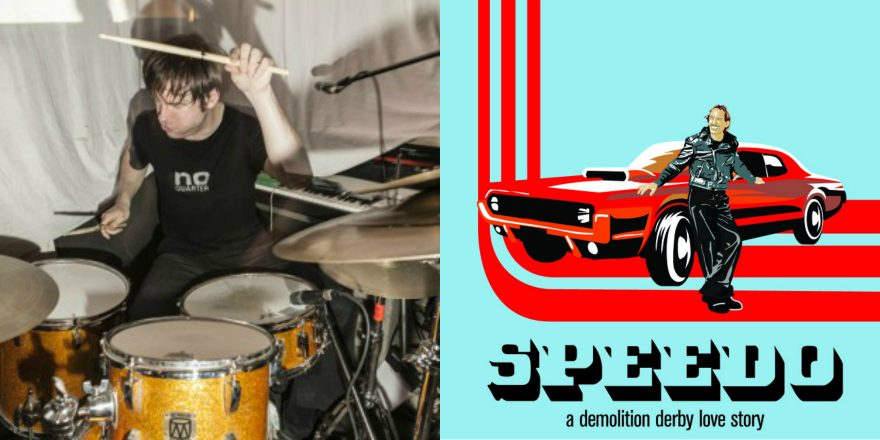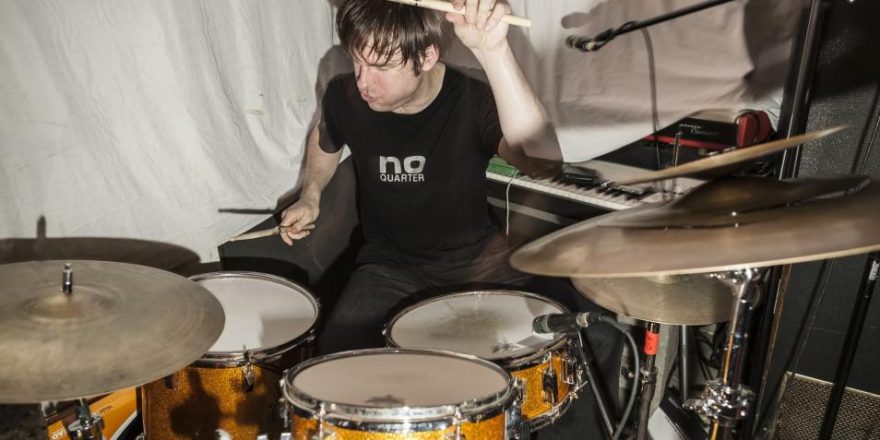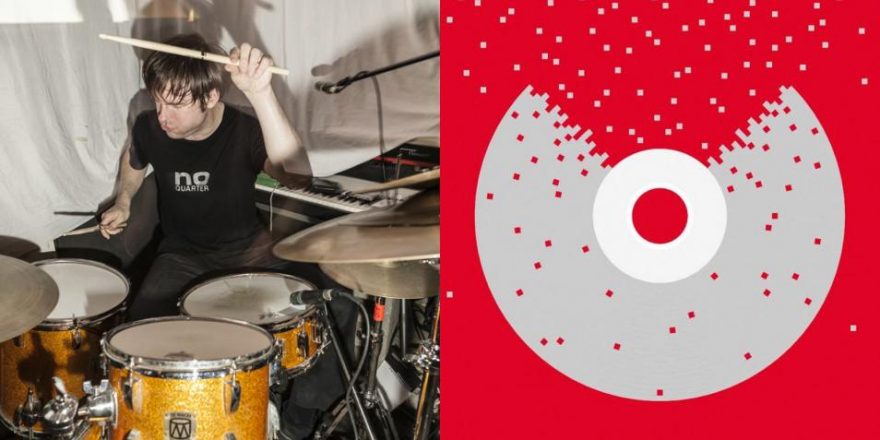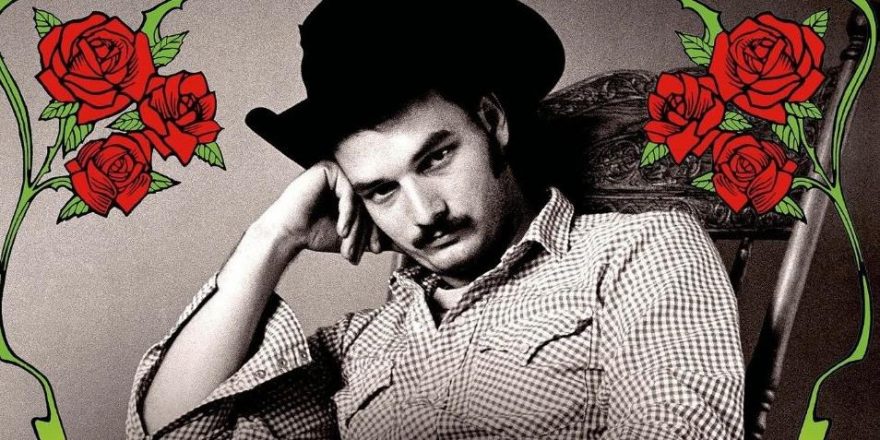One of the most potent feelings that accompany collaboration is fear: terrifying, abject fear. Fear that you won’t get along with your collaborator, fear that you’ll make something terrible, fear that an opportunity will be squandered, fear that one’s vision for a project will end up a grotesque parody of the original conception. The relationship between a filmmaker and a composer coheres to this model — we’re afraid that, despite our best efforts to the contrary, nothing of use will emerge.
A few weeks ago, I went to see Hail, Caesar!, the newish Coen Brothers’ film scored by the inimitable Carter Burwell. The film takes place on the Capitol Pictures lot during Hollywood’s Golden Age, and the main character is a “fixer.” He manages productions, difficult stars and the press corps as various genre pictures are filmed on different sound stages. As we are given a virtual tour of the studio lot, we also watch clips of the finished films with their accompanying soundtracks. We see the titular epic “prestige picture,” a corny Western, a Busby Berkeley-style aquatic fantasy, a period costume drama and a Navy musical. Incredibly, each film has its own characteristic and emblematic score. Somehow Burwell’s music is fluent to the era and slots seamlessly into each style. His accomplishment is so great that it’s only after we’ve been led through this huge collection of clips that we realize that a single composer has accompanied the menagerie. Burwell’s triumph becomes a good metaphor for the soundtrack composer as a pliable and often transparent entity.
A film soundtrack is meant to serve not only the image, but bolster the narrative and emotional energy of a work. Unless you’re extraordinarily lucky, filmmakers do not create a narrative based on your amazing music. If you are interested in doing soundtrack work, it’s best to keep your ego in check. To illustrate the virtue of modesty, I’d like to present you with the story of a collaboration that went off the rails so that, I hope, you can avoid some pitfalls in the future.
Sometime in 2001, director Jesse Moss approached my band, Oneida, to work on the soundtrack for his great 2003 documentary, Speedo, about a demolition driver who went by that nickname. Despite our best efforts, most of the music we created did not end up in the final cut. So what went wrong? Moss and I recently spent some time reflecting on this.
When Oneida were asked to participate in the soundtrack, we were excited and pleasantly surprised. Our music and live performances did not obviously lend themselves to soundtrack music, but Jesse had been using ’70s hard rock songs as placeholders in an early cut of the film and thought Oneida could create something contemporary with that feel. The main character was a loose-cannon type, trying to keep his life and family together against a backdrop of brutal demolition derbies.
Jesse told me of his decision to reach out to Oneida: “Oneida’s sound […] had a propulsive energy and dissonance that seemed to capture Speedo’s own internal and external struggles. What Speedo channeled through his demolition derby wrecks, Oneida seemed to channel through their instruments.”
At the time, we had our own studio and recorded some demos that felt tough and powerful. We presented them to Jesse thinking that we had knocked the music out of the park.
Our follow-up meeting, however, was clouded with an ambiguous tension. It seemed that Jesse was unhappy with the music, but in our blind unshakable belief in the material, we struggled with the implications. I remember a difficult and awkward exchange in which no clear mandates were expressed but the general gist became clear. Our demos were not working as well as the uncleared music Jesse had temporarily placed in the film. I remember being shocked that he wasn’t THRILLED with the music. I actually felt hurt and stunned. We were sensitive to criticism, and instead of buckling down and working through our different visions for the music in the film, we doubled down and did not make significant changes to our material when we went to record the final versions.
Jesse recalls, “I liked the music very much, but felt that [it] overwhelmed the scenes; [the music] was conspicuous and competed with the dialogue and image in ways that I found distracting.”
For instance, we scored an awesome one-minute montage derby scene that had a voiceover by the subject of the film. Oneida’s music was brash and muscular, but the eventual choice in the film was a medium-tempo organ-and-guitar blues. Unfortunately, our contributions are lost on magnetic tape right now, so we can’t A/B them, but the music in the final cut was often similar to the music slotted as placeholders during the rough edits of the film. Our different interpretation was jarring. Moss admits that perhaps he hadn’t allowed himself enough time to fully immerse himself in our new interpretations, but both our memories are hazy.
The final recording session for the soundtrack was completed during a July heat wave and the performances were somewhat wilted. The versions we handed in to Jesse felt compromised, but we also did not have a clear sense of how to improve the material. We were presented with a double bind: we weren’t able to accept criticism in a constructive way, and Jesse struggled to communicate his misgivings about the material clearly. This was the first time in our career we were faced with the gaps of understanding between musicians and collaborators.
For instance, when we discussed “rock” with the director, Oneida’s understanding coalesced around an austere and narrow aesthetic of loud distorted guitars, brutal drumming and intense vocals. Think early Judas Priest, AC/DC, Iron Maiden, The Who — bands that were just emerging from garages and pubs, with lots of aggression and sublimated rage. But the word “rock” had a broader meaning for the filmmaker. There were huge imperceptible language gaps that dogged our process. Both parties believed they were speaking the same language, when all we shared were words. When Jesse suggested that the demos were “too punk,” I indignantly felt that the music did not adhere to the definition of punk. But, in hindsight, I believe he meant that our performance was not nuanced enough and stepped all over the subtlety of the scenes. Simply, the music was not working with his vision of the film.
Unfortunately Oneida wasn’t ready for that criticism and we presented an intransigent front. After we handed in the “final” version of our soundtrack accompanied with a “take-it-or-leave-it” ultimatum, Jesse heard music that had not evolved much from our original rejected demos. In the midst of the myriad other tasks to which he had to attend, he dropped most Oneida music from the film and started from scratch with another composer. One postmortem takeaway is that both parties gave up too quickly. Jesse told me, “What I’ve come to realize in subsequent collaborations is that it takes experimentation and iteration, frequent wrong turns, and both parties need to be open to that process.”
Oneida was bitter about the Speedo experience for a long time, but it ended up being an essential learning experience.
Here’s how Jesse summed it up during out conversation: “[A]s a director you have to fight for and defend your vision — that is all you have — and it’s easy to be destabilized. This might have been the right music for Speedo from Oneida’s perspective, but not from mine. That tension is healthy and what makes artistic collaboration both fruitful and fraught. Collaborators open your eyes to new ways of thinking, if you let them. And you can always retreat to a safe and familiar position — which may be the right one. And sometimes you have to, as you must in the edit room, try things that don’t work in order to realize what does work, or feel right.”
I love the fact that we were both struggling with competing visions; Oneida’s vision was just not the essential one, and at the end of the day, the film works very well without our music. I wish we had been able to find common ground, but when I think about Oneida back in those days, for better and for worse, we were not able to compromise for anyone.
I wanted to see what a successful collaboration looked like, so I asked the composer Jesse Novak, best known for his work on The Mindy Project, how to approach the process and bridge the gap between musician and filmmaker.
“You want to convey that you respect the job and that you are ready to work hard and be part of the team,” he told me. “You want to show your skill and your intelligence, and that you connect to the creativity that is leading the project. Your own creativity is important, but you need to be aware of your role in a larger creative vision. The more you connect to that vision, the better everyone feels.”
Perhaps we did not come to the Speedo project with enough humility. At the same time, we just weren’t ready to be humble. Sometimes the blind faith that propels you through the countless defeats and humiliations of a music career works against you in collaborations.
I wondered how Novak addressed the language gap between composer and filmmaker. He told me, “The answer is to be as patient as possible and focus on the scene and the feeling.”
When Oneida was presented with another soundtrack opportunity by director JL Aronson for his 2008 documentary, Up on the Roof, about Williamsburg pigeon-keeping, we took a different attitude toward the project. We didn’t look at the soundtrack as representative of our band. Despite the fact that the filmmaker assured us that he wanted unadulterated Oneida, we were able to extract the implication behind those words. It was a musical project that was loosely associated with the band, but it was not the essence of our aesthetic. It did not somehow define us. We worked up a number of pieces to accompany different scenes, and a lot of them were slotted into the film. The experience was positive for us and was gratifying on a project level, but not necessarily on a core creative level. We understood that we were part of a larger process and it could not be about our creative ambitions.
Jesse Moss shared some words of advice for musicians interested in getting into scoring: “It’s important to build relationships with directors, but also [to] listen carefully to film scores and familiarize yourself with the grammar of this language, which is different than live performance or album or track production, [i.e.] music that is intended to stand alone.”
Great film scores are often a small cog in a greater machine. Novak told me about composing for The Mindy Project, “It’s high pressure because of the deadlines, but it’s low stakes from a personal point of view: it’s just music, it’s not my entire life. It’s not like I’m putting my soul out there for a reviewer to put a number on.”








